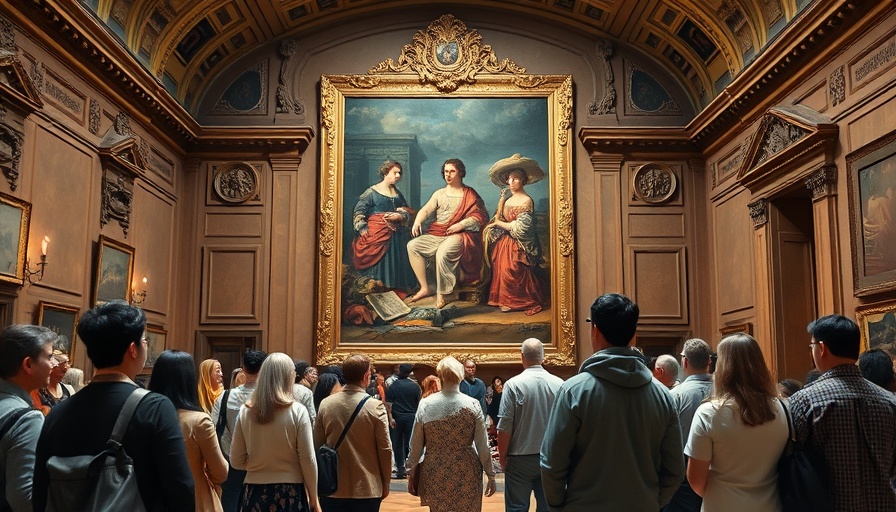
AI Transforms Historical Artworks: A Modern Renaissance
Move over traditional conservators; artificial intelligence is redefining the way we approach art restoration. Whether it’s digitally filling in cracks or reconstructing lost colors, AI is making waves in galleries worldwide. This factor isn't merely an adjunct to human creativity; it’s becoming an essential tool for curators and conservators. AI technologies, such as neural networks and advanced imaging, are enabling the revival of masterpieces like never before.
The Art of Restoration: Notable Success Stories
One of the capstones of AI restoration is the groundbreaking project led by the Rijksmuseum in Amsterdam. With AI meticulously miming Rembrandt’s brushwork, the museum successfully restored parts of “The Night Watch” that had been lost to time. This ingenious approach used historical data and imaging techniques to reintegrate edges that were cut away centuries ago, showcasing a seamless blend of old-world artistry and new-world technology.
Furthermore, the PERCEIVE project illustrated another triumph in AI restoration by returning vibrant colors to Edvard Munch’s “The Scream.” The collaboration between various institutions led to a visual resurrection that allows viewers to appreciate the iconic piece as it originally appeared in 1893. Now, with the help of what some art enthusiasts are calling the “Scream Time Machine,” speculation about its future appearances adds layers of intrigue.
Financial Gains: The Monetization of Masterpieces
The financial implications of AI restoration cannot be overstated. Just take a look at the auction prices of restored artworks: Leonardo’s “Salvator Mundi” fetched $450.3 million after restoration, illustrating how the right touch can drastically increase a painting's market value. Even mid-range paintings are witnessing significant gains—an average restoration can elevate a piece's worth by $2,000 or more, making it an appealing opportunity for both collectors and investors.
In essence, the equation is simple: modern restoration leads to higher insurance values, greater auction prices, and broader exhibition opportunities. As AI continues to lower costs and timeframes for restoration, more artworks can benefit, potentially revolutionizing the art market for both seasoned collectors and budding investors.
The Human Touch: Balancing Technology with Tradition
Despite the prowess of AI, human intuition remains irreplaceable. Conservators and curators are at the helm, ensuring that the artistry remains true to its original spirit. AI serves as a supplementary tool, allowing humans to innovate within the confines of tradition.
What This Means for Business Owners
For business owners aiming to scale operations in sectors influenced by art and culture, understanding these trends is vital. The intersection of AI and art restoration poses opportunities for investment, collaboration with tech firms, and a chance to engage with a culture-driven customer base. As you seek to build operational infrastructure, consider how embracing new technologies like AI can enhance brand engagement and drive sales.
 Add Row
Add Row  Add
Add 



Write A Comment